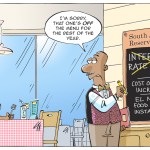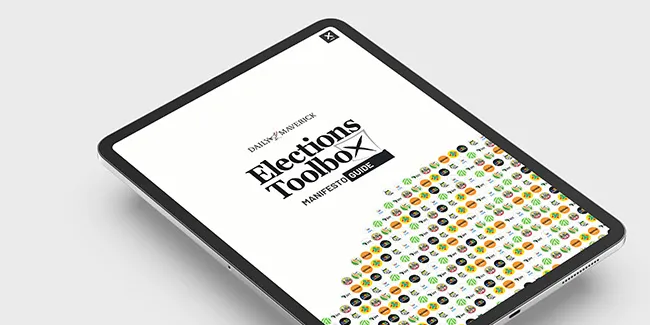The surprise rebound in retail sales reported by the Commerce Department on Thursday defied slumping consumer confidence. Sales were driven by a surge in online purchases, which offset a continued decline at auto dealerships. But sales in July were much weaker than initially estimated.
Economists have been downgrading their gross domestic product estimates for the current quarter, citing plunging motor vehicle sales, which are the result of an acute inventory shortage, and a flare-up of COVID-19 infections fueled by the Delta variant of the coronavirus.
“U.S. consumption is not slowing as quickly as it appeared a month ago despite the fading stimulus, and the Delta variant did not much affect the industries feeding into retail sales,” said Chris Low, chief economist at FHN Financial in New York. “The economy continued to hum in August.”
Retail sales rose 0.7% last month. Data for July was revised down to show retail sales declining 1.8% instead of 1.1% as previously reported. Economists polled by Reuters had forecast retail sales would drop 0.8%. Sales increased 15.1% from a year ago and are 17.7% above their pre-pandemic level.
They are holding up even as spending is shifting back from goods to services like travel and entertainment. Retail sales are mostly goods, with services such as healthcare, education, travel and hotel accommodation making up the remaining portion of consumer spending.
Online retail sales rebounded 5.3% after tumbling 4.6% in July. Most school districts started their 2021-2022 academic year in August, with in-person learning resuming after last year’s shift to online classes because of the pandemic.
Qualifying households in mid-July started receiving money under the expanded child tax credit program, which will run through December. Sales at clothing stores edged up 0.1% last month. There were strong gains in receipts at building material and furniture stores.
But sales at auto dealerships tumbled 3.6% after declining 4.6% in July. An ongoing global shortage of microchips is forcing has automakers to cut production.
The semiconductor crunch, which has been worsened by the latest COVID-19 wave, is also causing shortages of some electronic goods.
There is also congestion at ports in China. Sales at electronics and appliance stores fell 3.1%. There was also a decrease in receipts at sporting goods, hobby, musical instrument and book stores.
With coronavirus infections surging, the flow of traffic to restaurants and bars ebbed, keeping sales flat. Restaurants and bars are the only services category in the retail sales report.
Excluding automobiles, gasoline, building materials and food services, retail sales rebounded 2.5% last month after a downwardly revised 1.9% decrease in July.
These so-called core retail sales correspond most closely to the consumer spending component of GDP. They were previously estimated to have dropped 1.0% in July.
Stocks on Wall Street were trading lower. The dollar rose against a basket of currencies. U.S. Treasury prices fell.
GROWTH ESTIMATES
The National Retail Federation said the rise in sales despite the headwinds reflected the continued strength of the American consumer and the resilience of the nation’s retailers.
“We maintain our confidence in the historic strength of consumers and fully expect a record year for retail sales and a strong holiday season for retailers,” NRF President Matthew Shay said.
Americans are sitting on at least $2.5 trillion in excess savings accumulated during the pandemic. Wages are rising as companies scramble to fill a record 10.9 million job openings.
A separate report from the Labor Department on Thursday showed initial claims for state jobless benefits rose 20,000 to a seasonally adjusted 332,000 for the week ended Sept. 11.
Claims were likely boosted by Hurricane Ida, which devastated U.S. offshore energy production and knocked out power in Louisiana. Ida also drenched Mississippi and caused historic flooding in New York and New Jersey.
The number of people continuing to receive benefits after an initial week of aid fell 187,000 to 2.665 million in the week ended Sept. 4, the lowest level since mid-March 2020. The expiration of federal government-funded benefits early this month is expected to boost the labor pool.
“There is no evidence here that the surge in COVID cases related to the Delta variant is forcing a retrenchment in the economy,” said Conrad DeQuadros, senior economic advisor at Brean Capital in New York.
A third report from the Philadelphia Federal Reserve showed its business activity index jumped to a reading of 30.7 in September from 19.4 in August. A reading above zero indicates growth in manufacturing in the region, which covers eastern Pennsylvania, southern New Jersey and Delaware.
Manufacturers reported a moderation in input prices, which fits in with recent data suggesting that inflation had probably peaked. They also increased hours for workers as they struggled to find labor. Though expectations moderated, manufacturers were upbeat about business conditions over the next six months.
Tanking motor vehicle sales and struggles by businesses to replenish stocks have prompted economists to slash their GDP growth estimates for the third quarter. A fourth report from the Commerce Department on Thursday showed inventory accumulation slowed in July.
On Wednesday, economists at JPMorgan again trimmed their third-quarter GDP growth forecast to a 5.0% annualized rate from a 7.0% pace. The Federal Reserve’s “Beige Book” report last week showed “economic growth downshifted slightly to a moderate pace in early July through August.”
But after the release of the retail sales report on Thursday, economists at Morgan Stanley raised their third-quarter GDP growth estimate to a 5.0% rate from a 3.3% pace. Goldman Sachs raised its forecast to a 4.5% pace from a 3.5% rate, having lowered it to a 5.25% pace early this month.
The economy grew at a 6.6% rate in the second quarter. (Reporting by Lucia Mutikani Editing by Chizu Nomiyama and Paul Simao)





















 Become an Insider
Become an Insider
Comments - Please login in order to comment.